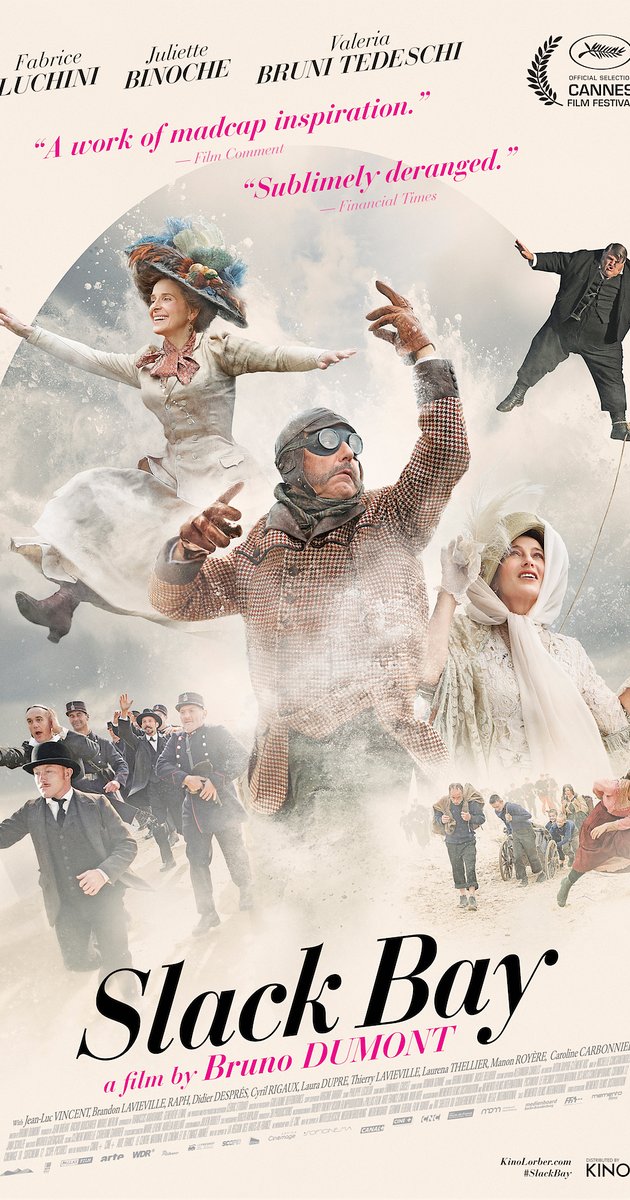"The Furniture," by Daniel Walber, is our weekly series on Production Design. You can click on the images to see them in magnified detail.

“Look! Mussel-gatherers!” Isabelle Van Peteghem (Valeria Bruni-Tedeschi) shrieks. “How picturesque!”
Her deranged tone of voice, along with the confused faces of the mussel-gatherers, let you know that you’re watching a Bruno Dumont film. Slack Bay is a comedy of manners and hats, kidnapping and cannibalism. Set on the coast of Northern France in 1910, it’s a period piece with no shortage of surprises.
Initially, the film seems to be making a fairly straightforward point about tourism and class. André (Fabrice Luchini) and Isabelle Van Peteghem are nightmarishly enthusiastic. Aude (Juliette Binoche), André’s sister, is even worse. They all find everything terribly amusing, including the budding friendship between Aude’s daughter, Billie (Raph), and a local kid named Ma Loute (Brandon Lavieville). The interior of their home mimics the interiors of their heads, packed with dusty, fancy nonsense.
Like much of Dumont’s work, Slack Bay was shot in the Pas-de-Calais. The interior of the Van Peteghem house was shot in the Chateau d’Hardelot, a 19th century Neo-Tudor mansion. Production designer Riton Dupire-Clement, who also worked on Dumont’s only other period piece (Camille Claudel 1915), does an excellent job of pairing opulence and silliness. For example, if you look closely, you can see an entire peacock mounted to the wall on the left.
This luxury stands in stark contrast to the fishermen’s quarter. Ma Loute’s home is made up of drab old houses, unkempt earth and collapsed roofs.
It is also the source of the recent wave of tourist disappearances. Ma Loute and his father bash people over the head while carrying them across the marsh, tie them up and drag them back home. Ma Loute’s mother carves them up for dinner. Dumont presents it all quite unceremoniously, of course, but that doesn’t make the bucket of flesh any less gross.
However, Slack Bay is not an uncomplicated attack on wealth inequality. Dumont’s critique is more complex, if not exactly subtle. The Van Peteghems come to the coast to admire its beauty, which includes their perceived simplicity of its people. But they themselves are also grotesque. This is especially evident in the extreme arc of Binoche’s performance, but it also sits quite prominently in their surroundings.
For the exterior of the Van Peteghem manse, Dumont used the Typhonium. This bizarre Egyptian revival mansion was built for artists Adrien Demont and Virginie Demont-Breton in 1891. “Ptolemaic,” André would add. It sticks out from the landscape, a miniature palace of individual artistic commitment.
André’s architectural opinions come out in one scene in particular, a private moment in which he angrily sputters at a book by John Ruskin. The issue in question is complex, but the gist is as follows. Ruskin was an early European advocate for historic preservation. He insisted that old buildings should be left alone, that restoration is “a lie from beginning to end.” His primary opponent was French, an architect named Eugene Viollet-le-Duc who regularly restored buildings according to what he believed they should have looked like in the first place.
How does this apply to André and his family? Well, they come to this area for vacation, explicitly shrieking about is picturesque quality. Yet rather than actually enjoying its pre-existing charms, they insert their own crazy ideas into the landscape. The Egyptian features of the Typhonium are the most prominent example, but there is also the ridiculous “Parc aux Huitres” that has been set up next to an oyster farm. “Leave the fishermen alone,” André and Isabelle shout at their children, and then loudly complain about the quality of the omelettes.
The local economy and environment are sculpted into a surrealist vision of tourism. Perhaps there’s no greater example than André’s adored beach-sailing vessel, a two-seater death trap with a single sail.
He loses control and crashes into the worst of all possible targets: an enormous ship that has just washed up on shore. One impractical form of transportation murders another, an absurdist collision that illustrates one final point. No one gets out of a Bruno Dumont film without looking ridiculous.








